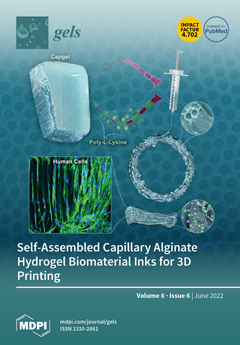H
2O
2 is essential for cellular processes and plays a vital role in the regulation of cell signaling pathways, which can be viewed as a warning signal for many kinds of disease including cancer, cardiovascular disease, reproductive abnormalities, diabetes, and renal
[...] Read more.
H
2O
2 is essential for cellular processes and plays a vital role in the regulation of cell signaling pathways, which can be viewed as a warning signal for many kinds of disease including cancer, cardiovascular disease, reproductive abnormalities, diabetes, and renal failure. A H
2O
2-responsive hydrogel (H
2O
2-Gel) is a promising candidate for biomedical applications because of its good biocompatibility, similarity to soft biological tissues, ease of preparation, and its ability to respond to H
2O
2. In this study, the H
2O
2-responsive moieties used to fabricate H
2O
2-Gels were reviewed, including thioethers, disulfide bonds, selenides, diselenium bonds, diketones, boronic, and others. Next, the preparation method of H
2O
2-Gel was divided into two major categories according to their reaction mechanisms: either self-crosslinking or mechanisms entailing the addition of difunctional crosslinkers. Last, the applications of H
2O
2-Gels were emphasized, which have been viewed as desirable candidates in the fields of drug delivery, the detection of H
2O
2, glucose-responsive systems, ROS scavengers, tissue engineering, and cell-encapsulation.
Full article






